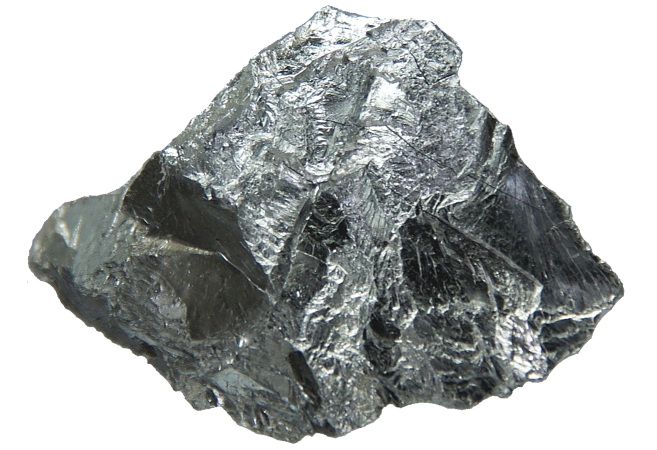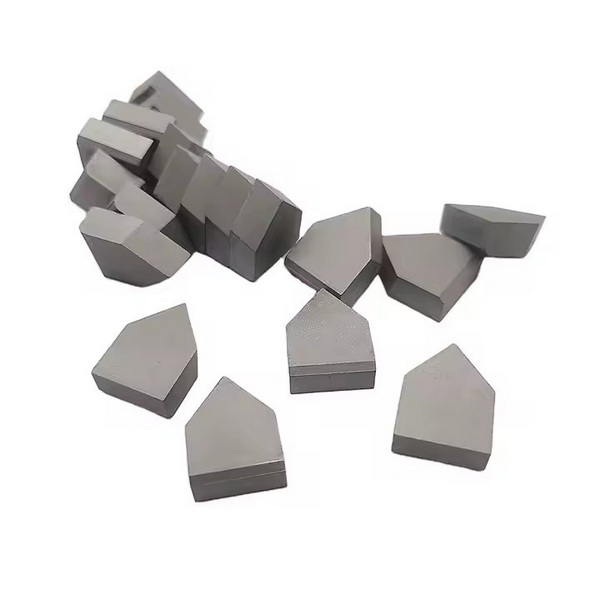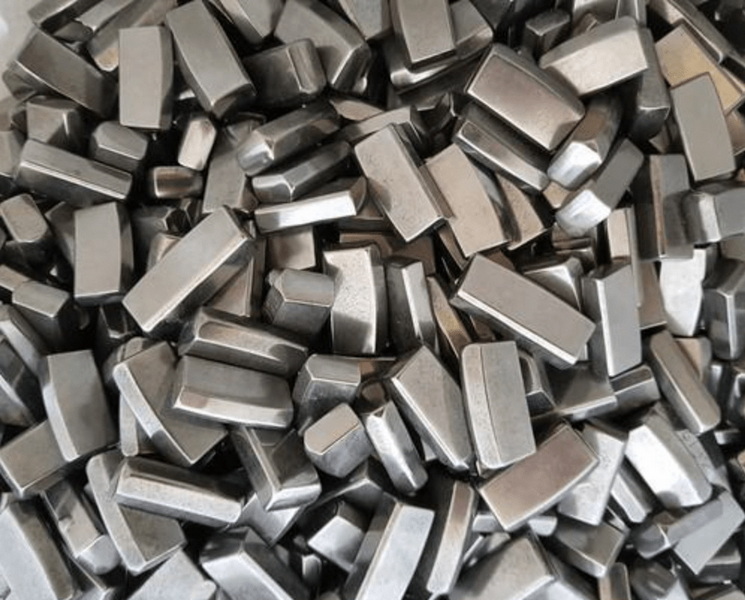Content Menu
● Production of Calcium Carbide
● Applications of Calcium Carbide
>> Acetylene Production
>> Production of Calcium Cyanamide
>> Steelmaking
>> Production of Polyvinyl Chloride (PVC)
>> Mining Industry
>> Other Applications
● Advantages and Disadvantages of Using Calcium Carbide
>> Advantages
>> Disadvantages
● Future Developments and Challenges
● Conclusion
● FAQ
>> 1. What is the chemical formula of calcium carbide?
>> 2. How is acetylene gas produced from calcium carbide?
>> 3. What are the main uses of acetylene gas produced from calcium carbide?
>> 4. How does calcium carbide contribute to steelmaking?
>> 5. What is calcium cyanamide, and how is it produced from calcium carbide?
● Citations:
Calcium carbide (CaC2), a chemical compound composed of calcium and carbon, is a hard, gray-black solid that has a wide array of applications across various industries. Its versatility stems from its ability to react with water to produce acetylene gas, a highly flammable gas used in welding, lighting, and the production of various chemical products. This article explores the main uses of calcium carbide, focusing on its production, applications in different sectors, and its role in modern industries.

Production of Calcium Carbide
The production of calcium carbide is an energy-intensive process that requires high temperatures and specific raw materials. The primary ingredients for producing calcium carbide are calcium oxide (quicklime) and carbon, usually in the form of coke or powdered coal.
Raw Materials:
- Calcium Oxide (Quicklime): Calcium oxide is derived from limestone or marble through a process called calcination, where the calcium carbonate in the rock is heated to high temperatures (above 900 degrees Celsius) to decompose it into calcium oxide and carbon dioxide.
- Carbon: The carbon source, typically coke or powdered coal, must be pure and free from impurities to ensure the quality of the final calcium carbide product.
Production Process:
1. Mixing Raw Materials: The calcium oxide and carbon are mixed in a ratio of approximately 1 part calcium oxide to 3 parts carbon.
2. Heating in an Electric Arc Furnace: The mixture is then placed in an electric arc furnace, where it is heated to temperatures exceeding 2000 degrees Celsius. The intense heat initiates a series of chemical reactions.
3. Chemical Reaction: At high temperatures, the carbon reacts with the calcium oxide to produce calcium carbide and carbon monoxide gas. The reaction is represented by the chemical equation:
CaO + 3C \rightarrow CaC2 + CO
This reaction is exothermic, releasing a significant amount of heat that helps drive the reaction forward.
4. Collection and Processing: The calcium carbide forms as a solid mass in the furnace, which is then broken into smaller chunks for further processing and use.
Applications of Calcium Carbide
Acetylene Production
One of the most significant uses of calcium carbide is in the production of acetylene gas (C2H2). Acetylene is a highly flammable gas with a wide range of industrial applications. The production of acetylene from calcium carbide involves a simple chemical reaction:
CaC2 + 2H2O \rightarrow C2H2 + Ca(OH)2
When calcium carbide reacts with water, it produces acetylene gas and calcium hydroxide (slaked lime). This reaction is exothermic and releases heat.
Uses of Acetylene Gas:
- Welding and Cutting: Acetylene gas is widely used in oxy-acetylene welding and cutting torches due to its high flame temperature. The intense heat produced by burning acetylene allows for precise cutting and welding of metals.
- Chemical Synthesis: Acetylene is a crucial raw material in the synthesis of various chemicals, including vinyl chloride, acrylonitrile, and other organic compounds. These chemicals are used in the production of plastics, synthetic fibers, and other industrial products.
- Lighting: In the past, acetylene was used in carbide lamps for lighting in automobiles, mining, and other applications where a portable light source was needed. While electric lamps have largely replaced carbide lamps, they are still used in some niche applications.
Production of Calcium Cyanamide
Calcium carbide is also used in the production of calcium cyanamide (CaCN2), a nitrogen-rich compound used primarily as a fertilizer. Calcium cyanamide is produced by reacting calcium carbide with nitrogen gas at high temperatures:
CaC2 + N2 \rightarrow CaCN2 + C
The resulting calcium cyanamide, also known as nitrolime, is used in agriculture as a slow-release nitrogen fertilizer. It is also used in the production of dyes, pharmaceuticals, and pesticides.
Steelmaking
Calcium carbide plays a crucial role in the steelmaking industry, particularly in the desulfurization of iron and steel. Sulfur is an undesirable element in steel as it can reduce its strength and ductility. Calcium carbide is used to remove sulfur from molten iron through the following reaction:
CaC2 + S \rightarrow CaS + 2C
When added to molten iron, calcium carbide reacts with sulfur to form calcium sulfide (CaS), which can be easily removed from the molten metal. This process improves the quality and mechanical properties of the steel.
Additionally, calcium carbide can be used as a deoxidizer in steelmaking, helping to remove oxygen from the molten steel, which further enhances its quality. It can also be used as a fuel in steelmaking to increase the scrap ratio to liquid iron, depending on economic factors.
Production of Polyvinyl Chloride (PVC)
Calcium carbide is indirectly involved in the production of polyvinyl chloride (PVC), one of the most widely used plastic polymers in the world. Acetylene, derived from calcium carbide, is a key raw material in the production of vinyl chloride, the monomer used to make PVC.
The process involves the conversion of acetylene to vinyl chloride through hydrochlorination:
C2H2 + HCl \rightarrow CH2=CHCl
Vinyl chloride is then polymerized to form PVC, which is used in a wide range of products, including pipes, cables, packaging materials, and construction materials.
Mining Industry
In the mining industry, calcium carbide is used in the production of calcium cyanide, a compound used in the extraction of precious metals such as gold and silver from ores. The cyanide process involves dissolving metal ores in a cyanide solution, which is then processed to extract the precious metals.
Other Applications
Besides the major applications listed above, calcium carbide has several other uses:
- Ripening Agent: Calcium carbide is used as a ripening agent for fruits, as it produces ethylene gas when it reacts with moisture. Ethylene is a plant hormone that promotes fruit ripening.
- Desulfurization: Calcium carbide is used to remove sulfur emissions from industrial processes and power generators. The calcium hydroxide produced as a byproduct of acetylene generation is effective in scrubbing stack gases to remove sulfur compounds.
- Neutralization: Calcium hydroxide, a byproduct of acetylene production, is used for acid neutralization in various industrial applications, including the treatment of waste streams and sewage. It is also used to modify the pH of soil and in the manufacturing of sand-lime brick.

Advantages and Disadvantages of Using Calcium Carbide
Advantages
- Versatility: Calcium carbide is a versatile compound with applications in various industries, including welding, steelmaking, agriculture, and chemical production.
- Acetylene Source: It provides a convenient and cost-effective source of acetylene gas for welding and other applications.
- Desulfurization: Effective in removing sulfur from iron and steel, improving their quality and mechanical properties.
- Fertilizer Production: Used in the production of calcium cyanamide, a valuable nitrogen fertilizer.
Disadvantages
- Hazardous Reactions: Reacts violently with water, producing flammable acetylene gas and releasing heat, which can pose safety risks.
- Environmental Concerns: The production of calcium carbide is energy-intensive and can contribute to carbon emissions if not managed properly.
- Impurities: The raw materials used in calcium carbide production must be pure to avoid contaminating the final product.
- Handling and Storage: Requires careful handling and storage to prevent accidental reactions with moisture.
Future Developments and Challenges
As industries continue to evolve, there is a growing focus on sustainability and reducing environmental impact. The production of calcium carbide, being energy-intensive, faces challenges in aligning with these goals. However, ongoing research aims to improve the efficiency of calcium carbide production processes and explore alternative uses that minimize environmental impact.
Moreover, advancements in technology are expected to enhance the safety and efficiency of handling calcium carbide, reducing the risks associated with its hazardous reactions. Innovations in materials science may also lead to the discovery of new applications for calcium carbide, further expanding its role in modern industries.
Conclusion
Calcium carbide is a versatile chemical compound with a wide range of applications across various industries. From its primary use in the production of acetylene gas for welding and chemical synthesis to its role in steelmaking, fertilizer production, and mining, calcium carbide plays a crucial role in modern industrial processes. While it offers numerous advantages, including its versatility and effectiveness in desulfurization, it also presents challenges such as hazardous reactions and environmental concerns. As technology advances, ongoing research and development efforts aim to improve the efficiency and safety of calcium carbide production and handling, ensuring its continued relevance in various sectors. The future may see even more innovative applications of calcium carbide as industries continue to explore its unique properties and potential.

FAQ
1. What is the chemical formula of calcium carbide?
The chemical formula of calcium carbide is CaC2.
2. How is acetylene gas produced from calcium carbide?
Acetylene gas is produced by reacting calcium carbide with water, according to the equation: CaC2 + 2H2O → C2H2 + Ca(OH)2.
3. What are the main uses of acetylene gas produced from calcium carbide?
Acetylene gas is mainly used in welding and cutting torches, chemical synthesis, and, historically, in carbide lamps for lighting.
4. How does calcium carbide contribute to steelmaking?
Calcium carbide is used in steelmaking as a desulfurizing agent to remove sulfur from molten iron, improving the quality and mechanical properties of the steel.
5. What is calcium cyanamide, and how is it produced from calcium carbide?
Calcium cyanamide (CaCN2) is a nitrogen-rich compound used as a fertilizer. It is produced by reacting calcium carbide with nitrogen gas at high temperatures: CaC2 + N2 → CaCN2 + C.
Citations:
[1] https://www.carbidellc.com/solutions.html
[2] https://www.tjtywh.com/a-the-use-and-applications-of-calcium-carbide-lumps.html
[3] https://www.tjtywh.com/a-step-by-step-guide-to-making-calcium-carbide-at-home.html
[4] https://www.alamy.com/stock-photo/calcium-carbide.html
[5] https://www.vedantu.com/chemistry/calcium-carbide
[6] https://chemistry-europe.onlinelibrary.wiley.com/doi/10.1002/ejoc.202001098
[7] https://byjus.com/chemistry/calcium-carbide/
[8] https://www.tjtywh.com/what-is-calcium-carbide-and-its-applications.html
[9] http://www.crecompany.com/company_news_en/Calcium_Carbide82.html
[10] https://testbook.com/chemistry/calcium-carbide
[11] https://www.youtube.com/watch?v=9Ott9QJRq48
[12] https://www.instructables.com/how-to-make-calcium-carbide/
[13] https://www.youtube.com/watch?v=olAlOs0Er00
[14] https://onlinelibrary.wiley.com/doi/full/10.1002/cjoc.202300358
[15] https://www.tjtywh.com/a-the-top-manufacturers-of-calcium-carbide-a-comprehensive-guide.html
[16] https://www.alamy.com/stock-photo/calcium-carbide.html?page=2
[17] https://www.shutterstock.com/search/%22calcium-carbide%22?page=2
[18] https://www.pexels.com/search/calcium+carbide+uses/
[19] https://www.istockphoto.com/photos/calcium-carbide
[20] https://www.shutterstock.com/search/calcium-carbide
[21] https://stock.adobe.com/search?k=%22calcium+carbide%22
[22] https://testbook.com/question-answer/calcium-carbide-is-used-for-artificial-ripening-of--5ffead5ab5ac8c406f9ca3ed
[23] https://www.doubtnut.com/pcmb-questions/116690
[24] https://camachem.com/es/blog/post/frequently-asked-question-about-calcium-carbide
[25] https://edu.rsc.org/download?ac=515424
[26] https://camachem.com/pt/blog/post/frequently-asked-question-about-calcium-carbide
[27] https://www.tjtywh.com/a-the-role-of-calcium-carbide-in-industrial-applications1.html
[28] https://en.wikipedia.org/wiki/Calcium_carbide
[29] https://www.tjtywh.com/a-the-benefits-of-pulverized-calcium-carbide-in-industrial-applications.html
[30] https://www.alzchem.com/en/brands/calcium-carbide/
[31] https://www3.epa.gov/ttnchie1/ap42/ch11/final/c11s04.pdf
[32] https://enterclimate.com/calcium-carbide-manufacturing-unit-setup
[33] https://patents.google.com/patent/US4594236A/en
[34] https://www.istockphoto.com/photos/carbide-rocks
[35] https://www.dreamstime.com/photos-images/calcium-carbide.html
[36] https://sathee.prutor.ai/article/chemistry/chemistry-calcium-carbide/
[37] https://collegedunia.com/exams/calcium-carbide-chemistry-articleid-2931
[38] https://www.eiga.eu/uploads/documents/DOC196.pdf
















